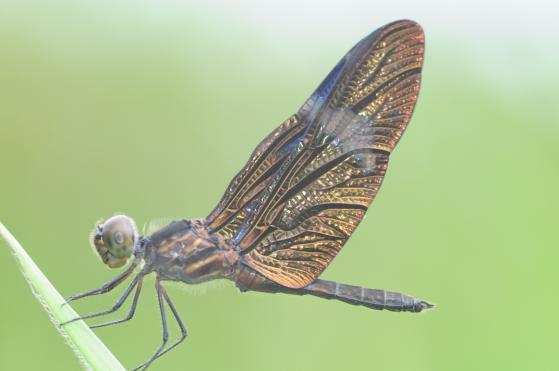Jenilee Maarit Montes Fontalvo
Other projects
21 Jun 2017
Comparative Study of Dragonflies Diversity Associated to Ambients Impacted for Artisanal Mining, with Purpose to Sensitize Native Families, Chocó-Colombia
The main objective of this work is the standardization for Colombia protected areas of a sampling model technique, allowing easy monitoring of the dragonflies populations and easy analysis of the aquatic habitats over time in order to reveal what are the important actions to take to protect them.

Zenithoptera fasciata.
Today water resources are particularly threatened, and therefore their management and their watersheds requires the development of a monitoring methods over time, implementation monitoring of water sources through bio-indicators is one of the most effective, easy to use and economical. The dragonflies are one of the most common groups as a tool for this purpose, due to its important relationship with components of aquatic habitats.
This project is the type of biological monitoring, based on the evaluation of the trend of biodiversity, the general objective is for protected areas and to standardize a protocol for monitoring selected populations of dragonflies in order to implement actions for the conservation of aquatic habitats for this reason this will provide a complete inventory of the species of dragonflies in the Colombian National Parks selected; will be identified indicator species of aquatic conservation status from the estimation of some of their demographic attributes such as abundance, richness , sex ratio in the larval and adults; and finally promote the dragonflies as a group of insects easy to monitoring, easily identifiable and closely related aquatic habitats elaborating material for promoting conservation of aquatic habitats.
The National parks selected will be visited two times in a year, there will be a choice of sampling areas taking into account the different types of aquatic habitats present and their representative within the park, the field methodology consists of using active adult individuals captured with an entomological net and immature stages (larvae and exuviae) following triangular-shaped transects. Field data were taken, abundance, wealth, size, sex ratio, larval and exuviae, also environmental factors such as temperature and humidity, solar radiation, wind speed, temperature, subsurface water, conductivity and dissolved oxygen, and vegetation characterization of each areas.
All these aspects will be entered in registration forms designed for that purpose and which will be delivered to official’s parks, which will make educational talks about managing them and recognition of dragonflies in the area. This point will also be extended to the population adjacent to parks to encourage the conservation of the environment around them.